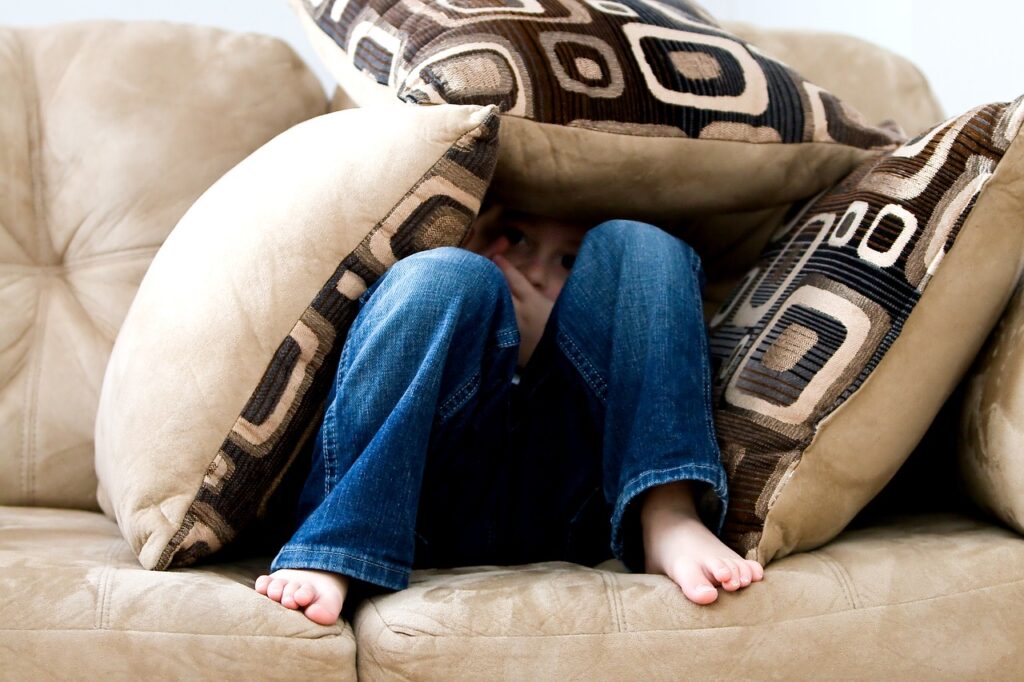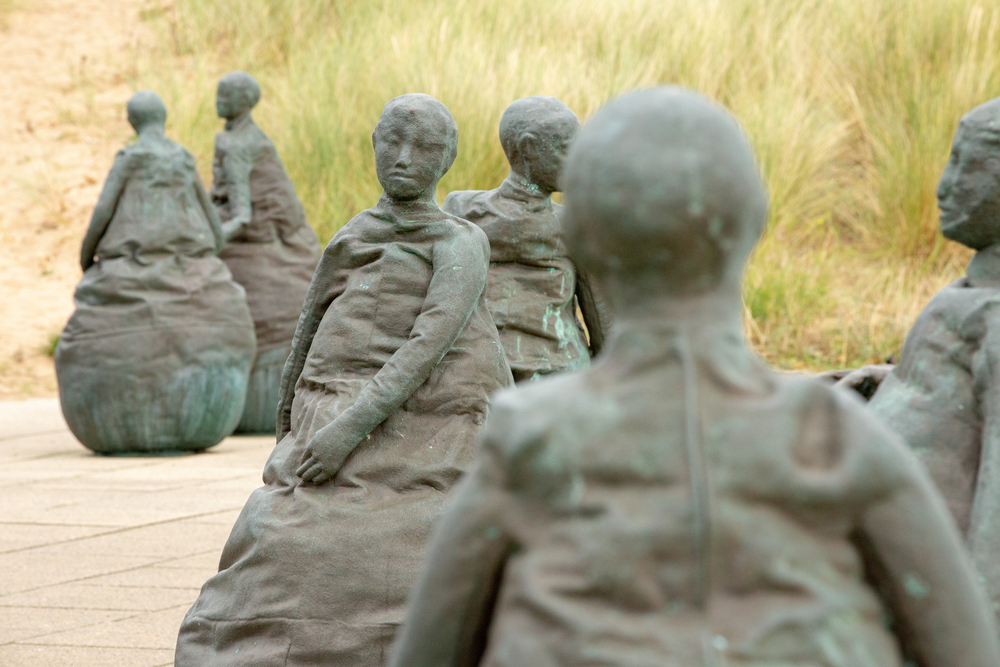The tagline for my favorite toy – ‘Weebles Wobble but They Don’t Fall Down’ – sums up my fancy psychological model of resilience and mental health. Weebles are shaped like humans but sport rounded bottoms rather than legs. They’re constructed to wobble when buffeted and reliably bounce back. As a psychologist and coach, this is my north star when working with clients.
My first weeble was a life-sized company mascot that traveled from office to office, settling in each day with the most stressed personnel. ‘Weebly’ was a resilience accelerant – happily serving as a punching bag. Thwacking away at a seemingly indestructible officemate was a source of release and relief to us stressed, tech-startup mere mortals. And the weeble metaphor was even more grounding than the daily boxing match.
My aspiration is to live like a weeble – greeting life openly, with all its splendor and turmoil – always bouncing (or inching) back to greet the next moment.
What is Resilience?
“The human capacity for burden is like bamboo – far more flexible than you’d ever believe at first glance ”
Jodi Picoult
Change and its inherent stress is an unavoidable aspect of the human condition. It’s the cost of choosing to live a full and fulfilling life. Resilience is a skill set for responding to that inevitable disruption.
Resilience is also a necessary component of well-being. The very definition of mental health is psychological flexibility: the ability to roll with these oscillations in the waves of life.
Embracing change with a willingness to be buffeted and the knowledge that we can hold our ground allows us to open to life’s risks and reap its rewards.
Weebles are resilient due to ballast in their bottom. In humans, we call this grounding. If the center is low, it’s harder to fall. This is why the first technique taught in breathwork and meditation is deep breathing. It calms the nervous system and persuades the hypervigilant brain that all is well. It allows us to ground. In this metaphorical way, we drive our ballast low in our body, allowing us to be buffeted by stressors without being bowled over.
Resilience Myths
“Sometimes carrying on, just carrying on, is the superhuman achievement.”
Albert Camus
‘Resilience’ has morphed into a buzzword and spawned a slew of faulty ideas. Let’s dismiss these at the getgo.
First, it’s time to dispense with victim shaming – implying that those who don’t handle difficult situations with ease are somehow defective. The normal human response to painful situations is to duck and cover or run.
Resilience isn’t pretending that we’re rolling with the punches when we’re actually shutting down. It’s experiencing all that life throws at us, metabolizing it consciously, and then making wise choices in our behavior that enhance our lives and the lives of those around us.
Second, there are many situations that actively interfere with resilience. For those who struggle with their most fundamental needs – to access clean water, food, safety, freedom from discrimination – the ability to cope with new challenges is diminished. A lack of resilient role models can also hamper our development in this area. If we don’t learn through unconscious modeling, then deliberate learning is required and resilience simply isn’t taught.
Finally, no one should be forced to be resilient in response to systems that treat them unjustly. Individual solutions to systemic problems are nonsense and miss the point.
Resilience Gone Wrong
Think of self-protection as a spectrum, ranging from no protective shield to a rigid barrier. Resilience lives in the middle of this spectrum and trouble brews at the poles.

No Protective Shield
If we aren’t lucky enough to have resilient role models and we aren’t deliberately taught these skills – or, for that matter, their importance – then we lack a system to meet change. Without a protective shield, we’re buffeted by every disruption and chaos ensues.
Lacking the skills to meet change results in a narrowing of attention. Our entire focus becomes the problem and our awareness of available solutions becomes equally narrow. This is how we wind up making decisions we later regret – ranging from a bit of retail therapy to a full-blown addiction.
Underdeveloped resilience – and its accompanying lack of solutions to life’s problems – is often the root cause of depression, anxiety, stress, and interpersonal challenges.
Rigid Barrier
On the other extreme is a rigid exterior that doesn’t allow much of anything in. These are the folks who claim to live “perfect” lives, make command decisions without a care, and look down on people who have and express feelings. Look closely, and it’s clear that this is just a facade.
Creating barriers so that we’re impenetrable to life’s vicissitudes can be effective for a time. These folks get things done. They seem solid. But, like all rigid things, when this barrier breaks, it shatters. It turns out that these seemingly solid people are actually more fragile because they have no flexibility.
Consider earthquake-resistant structures. They’re built to sway elastically as the quake’s energy moves through, whereas traditionally-built, rigid structures shatter. And the most resilient buildings are designed with ballast – a wide base that narrows as it goes up.
Thoughtful construction of our emotional protective barrier is equally essential. We need just the right amount of slack in the system – the sweet spot of flexibility.
Routes to Resilience
“Between stimulus and response there is a space. In that space is our power to choose our response. In our response lies our growth and our freedom.”
Viktor E. Frankl
Resilience is the key to transformational change.
Unlike many other well-publicized personal growth prescriptions, such as grit and motivation, everyone can build resilience from the ground up and strengthen it over time. It isn’t a fixed trait or an innate characteristic. It isn’t elusive.
Resilience is just a muscle. It may be a bit flaccid at any given moment but, like any other muscle, we can work it and become stronger through repetitive practice. A conditioned muscle is both powerful and supple, creating balance between the polls of fragility and rigidity described above.
The building of resilience is as flexible as the end result: there are many tools to choose from. The mindfulness toolbox is a great starting point, since it encourages presence with whatever is occurring and expansion of awareness.
1. Honor the Pause
The first rule of healthy interactions – with ourselves and with others – is to respond rather than react under stress. Pausing facilitates this capacity.
Stop doing.
Take the time to acknowledge that something just happened. If possible, identify the turmoil swirling within and find the experience in your body. Where do those thoughts, feelings, and sensations reside? Focus your attention there and see what you can learn. This is a brief, active time-out that allows you to embody the experience rather than blowing your top.
The pause is the weeble’s pendulum swing, allowing time to wobble from side to side before landing in the middle.
2. Breath Deeply
Weebles wobble without falling thanks to the location of their center of gravity. It’s low. As with earthquake-resilient buildings, the lower the center of gravity, the harder it is to knock us over. Weebles, buildings, and humans all function best when we’re able to dig deep and ground in our center.
The same principle applies in terms of our attention. Grounding allows us to expand out of the narrow state of attention that stressors breed.
That said, deep breathing is often the first and best line of defense. As we move our attention out of the head and into the lower belly, grounding is enhanced. With practice, we learn to go to that stable place by default when challenged.
Here’s a simple experiment: Practice five minutes of deep breathing daily for a month and try to remember to return to that breath whenever a challenge arises. Simply notice what happens internally. Where does your attention go? Does it expand or contract? Do your emotions follow? Are you becoming more or less distressed?
Most people find that their attention widens, their challenges seem smaller or less destabilizing, and calm expands. And once we’re grounded, we’re more easily able to move into an effective problem-solving mode.
To maintain my regular breathwork practice, I rely on the Breathe app on my watch, this one-minute square breathing visual, and reminders set sporadically on my phone. You’re more likely to remember to breathe in a crisis if you practice breathing regularly.
3. Connect
The power of connection can’t be overstated. Discussion releases pent-up energy, widens our attention, and often provides unexpected solutions.
But connection isn’t limited to humans and is sometimes less complicated when we turn to nature or animals. Hugging a tree, splashing in a river, or petting a cat, can remind us of the expansiveness of the world – that the world and life are bigger than this one problem.
We can also find connections with other humans, even when we’re very much alone.
When I’m drinking a cup of tea, I like to consider the whole journey from plant to my belly – the people who planted the bushes and pruned the leaves, all the elements that compose the nurturing soil (water, sunshine, minerals), the chain of people and systems that took part in delivering that tea to my doorstep. It reminds me that I’m already deeply connected to humanity.
And, if I need an extra dose of connection, I prove to myself that I’m not the end of the chain. I post an online review of the tea, contributing to other people’s lives. The interconnectedness is there, even on a day when I’m certain I haven’t a friend in the world. And that sense of being a part of something, even in my most lonely place helps me build resilience.
I also like to think about trees and their root systems, which are invisible to us above ground beings. These root systems are all connected, and are broad and strong. Humans aren’t so different. Even if we feel lonely or alone, there’s a level of interconnectedness that we actually can’t escape. There’s a shared resilience in the power of community, even when that community isn’t visible.
Resilience TL;DR
To live a rich and meaningful life, we need to embrace change with a willingness to be buffeted by its chaos and the skills to wobble without falling down. And we need to be able to trust that we can recover. Resilience is simply the ability to face challenges with a receptive state of mind, without collapsing or becoming rigidly protective.
Most importantly, resilience is a muscle that can be built rather than a trait reserved for a lucky few.
And, notably, resilience is not a cudgel with which to beat people when they’re already down. With all the injustice in this world, being drained of resilience is common. Shaming people for not being resilient is both traumatizing and exhausting.
Three mindfulness approaches to building resilience are:
1. Pausing to respond rather than react.
2. Deep breathing to build ballast and ground.
3. Connecting to expand awareness beyond our immediate pain.
Willing to join me in my quest to live as a weeble? I’d love to know your thoughts and your favorite resilience tools.
* Deep gratitude to my mentor, Stan Eisenstein, and all the members of our teacher’s sangha, who share their wisdom freely, replete with loving-kindness.





0 Comments